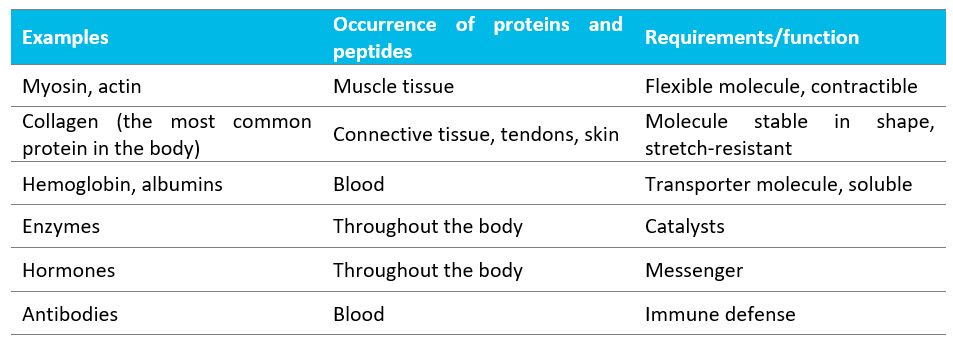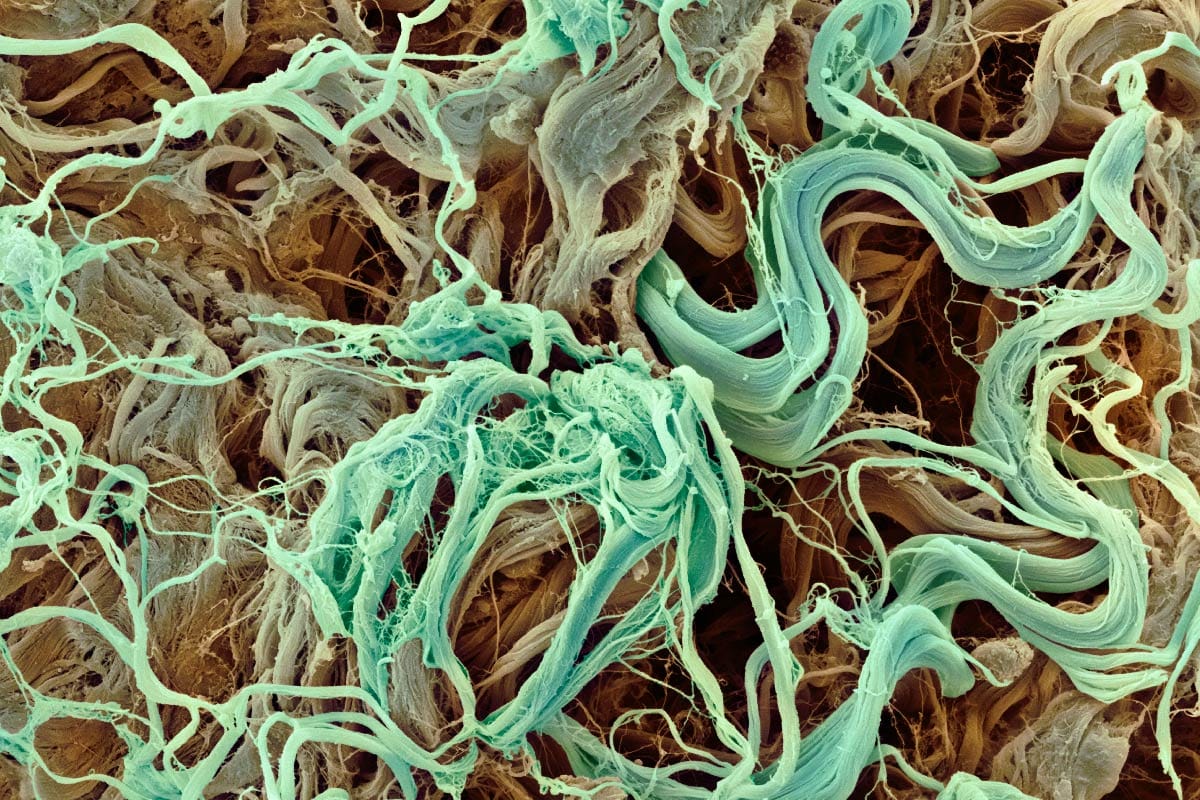What are peptides?
Peptides are chains of 2 to about 100 amino acids. They are linked together by an amide bond and can be found in any combination. The number of possible combinations is virtually infinite, and the amino acids may be repeated in any frequency, even with short peptides. For example, in a peptide with 10 amino acids (decapeptide), approx. 3.6 million different combinations!
The name usage typically depends on the length
- Proteins >100 amino acids
- Peptides ~ 2-100 amino acids
Short peptides are named as followed
- 2 amino acids = dipeptide
- 3 amino acids = tripeptide etc.
- a few amino acids (2-20) = oligopeptide
Furthermore, peptides can be straight, linear, cyclic, folded depending on the specific peptide. However, these chains of amino acids can be longer and in that case they are called proteins.
What’s the difference between peptide and protein?
The short answer is the “size”. Chemically, peptides and proteins are the same molecules. Peptides in principle are small proteins. Proteins are macromolecules, i.e. long molecules made from small subunits. And as peptides, they are composed of the 20 proteinogenic amino acids.
In addition to the length, peptides tend to be less well defined in structure than proteins, which can adopt complex conformations known as secondary, tertiary, and quaternary structures. Sharing the same structural principle, peptides and proteins have a huge variety of functions (see Table 1).

Table 1 – Endogenous proteins and their functions
What makes this variety possible?
Through variation in the amino acid building blocks and in length, macromolecules can be “constructed” with the most diverse properties imaginable. Modification of proteins and peptides in the body after ribosomal synthesis, the so called post-translational modification (PTM), adds even more variety, and increases the functional diversity of the proteome, the latter describing all proteins and peptides existing in an organism, a cell or tissue at the same time.
PTM includes addition of different chemical groups such as phosphorylation, glycosylation, methylation, and acetylation as well as enzymatic cleavage, so called “processing”, into pre-defined, shorter protein or peptide fragments in order to obtain their full functionality. PTMs impact almost all physiological processes and in consequence, are involved in many human diseases.
Peptides have innumerable functions throughout the body!
Within the body, hormones and neuropeptides trigger different biological processes. Hormones are messenger molecules that are secreted directly into the blood, which carries them to organs and tissues of the body to exert their functions.
Indeed, the majority of our hormones are peptides of varying length. They reach from very small peptides with 3 amino acids such as TRH (thyrotropin-releasing hormone) (Scheme 1) up to large ones with 84 amino acids, such as pTH (parathyroid hormone), the latter almost being small proteins.

Scheme 1 – Chemical structure of thyrotropin-releasing hormone
Even dipeptides can be biologically active: Leu-Trp and some other dipeptides lower blood pressure. Acetyl-Asp-Glu (NAAG) is an important neurotransmitter, a substance that mediates the transmission of signals between nerve cells.

Picture 1 – Molecular model of human amyloid beta fibrils
Peptides as therapeutics?
Peptides and proteins have significantly gained pharmaceutical importance because they often mimic exactly the behavior of a natural ligand, the molecule that interacts with the receptor on a cell, or, acts as a substrate or inhibitor of an enzyme to cause a biological process. Peptide or protein drugs have the potential to be more precisely targeted, with fewer side effects than small-molecule drugs. Furthermore, peptides can be modified in their properties, in order to further improve their therapeutic efficacy.
Throughout more than 50 years of experience, Bachem has become the leader in peptide manufacturing. With our strong expertise, we offer a large selection of peptides for research in our online shop and we support our partners in their peptide drug development. We work with passion and dedication to support our customers in achieving breakthrough medical advances that will significantly improve the life of patients.
In addition to our own innovations, we are proud to present recent forthcomings in peptide synthesis. Please watch our recent webinar video about Chemo Enzymatic Protein Synthesis (CEPS), improving the synthetic access to specific large linear or difficult cyclic peptides.
Subscribe to our newsletter
"*" indicates required fields
